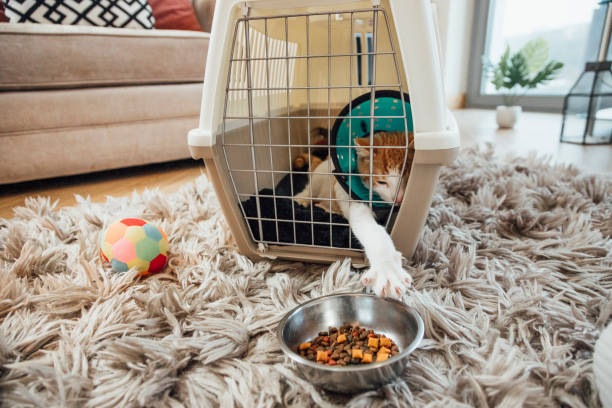First things first, let’s address the two sides of the coin. Pests like fleas, ticks, and rodents can pose health risks to your pets, while the chemicals used in pest control can also be concerning. It’s all about finding a balance between pest prevention and your pet’s well-being.
Prevention is the name of the game when it comes to protecting your pets from pests. Here’s how you can create a pet-friendly pest management plan:
- Regular Grooming: Keep your pets clean and well-groomed. Regular baths and brushing can help prevent flea and tick infestations.
- Lawn Care: Trim your lawn and bushes to reduce tick and flea habitats. Consider using pet-safe nematodes or diatomaceous earth in your yard. These measures can also deter squirrels from taking up residence in your trees and causing potential problems.
- Pet-Safe Repellents: Look for pet-safe flea and tick repellents and consult your veterinarian for recommendations. Avoid using products meant for other animals or humans.
Chemical-Free Options: Natural Pest Control
If you’re concerned about chemicals, you’re not alone! Here are some natural alternatives for keeping pests at bay:
- Diatomaceous Earth: This natural powder can help control fleas, ticks, and other pests. Just make sure to use food-grade diatomaceous earth and follow the instructions carefully.
- Essential Oils: Certain essential oils, like cedarwood, lavender, and eucalyptus, can act as natural repellents. Always dilute oils before using them on your pets and consult your vet.
Pest Control Inside: Pet Safety First
When using pest control chemicals indoors, take these steps to ensure your pets’ safety:
- Read Labels: Only use products specifically labeled as safe for pets. Look for products that have been approved by regulatory agencies.
- Isolate During Application: Keep your pets out of treated areas until the chemicals have dried completely. Follow the manufacturer’s recommendations.
- Ventilate: After treatment, open windows and doors to allow fresh air to circulate and chemicals to dissipate.
Professional Expertise: Choosing Pet-Friendly Pest Control Services
When in doubt, call in the professionals! Many pest control companies offer pet-friendly services. Here are a couple of trusted names to consider:
- Terminix: With their Precision Protection™ program, Terminix offers targeted treatments that focus on keeping pests away from your pets.
- Arrow Exterminators: Arrow’s experts use environmentally responsible methods that are safe for both your pets and your home.
Building a Pet-Safe Sanctuary
Create a designated pet haven during pest control treatments. This can be a room where your pets feel comfortable and secure, away from treated areas.
Aftercare: Post-Treatment Pet Care
After pest control treatments, take these steps to ensure your pet’s safety:
- Clean and Dust: Wipe down surfaces and vacuum treated areas to remove any residual chemicals.
- Bathe Your Pet: Give your pet a bath if they’ve been in treated areas. Use a mild pet-friendly shampoo.
Monitor and Observe Your Pet’s Well-Being
Keep a close eye on your pets after pest control treatments. If you notice any unusual behavior, symptoms, or signs of discomfort, consult your veterinarian promptly.
Remember, your pets are family, and their safety is a top priority. By combining preventative measures, natural solutions, and pet-friendly pest control practices, you can create a home that’s free of pests and full of happiness for your furry companions.
How to protect your pets from pest control chemicals:
